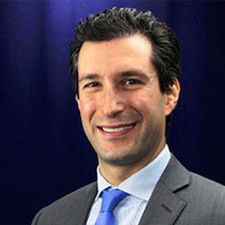Article
Faricimab Shows Efficacy in Treatment-Naive, Difficult-to-Treat Patients with nAMD
Author(s):
Real-world patients showed improvement in visual acuity and anatomic parameters, but are still at an early time point in TRUCKEE study.
Carl Danzig, MD

New findings suggest faricimab is showing efficacy in both difficult-to-treat and treatment-naive patients with neovascular age-related macular degeneration (nAMD) in the TRUCKEE Study.
Safety signals were additionally considered positive, as no cases of intraocular inflammation were reported in the 377 patients with 770 injections.
“In the future, we will hopefully be looking at durability, but for this study we were looking at the safety and efficacy after 1 injection,” said lead study author Carl Danzig, MD, Director of Vitreoretinal Services, Head of Retina Clinical Research, Rand Eye Institute.
The late-breaking findings were presented at the American Society of Retina Specialists 40th Annual Scientific Meeting.
The TRUCKEE study evaluated both the efficacy and safety of faricimab in real-world patients with nAMD. The target population were treatment-naive patients, but an emphasis was put on high-need patients, such as those who require frequent injections due to persistent disease activity.
Ongoing data collection is being undertaken to encompass the demographics, prior treatment history, efficacy, and safety. Efficacy measurements include vision, central subfield thickness, retinal fluid, and pigment epithelial detachments.
In total, 377 patients or 421 eyes were treated with faricimab and considered the study population. Those patients were administered a total of 770 intravitreal injections. There was follow-up data after faricimab injection available for 236 eyes.
Investigators looked at follow-up of the population with 20/400 vision or better, based on the conversion from Snellen to ETDRS. The mean age of the patients was 79.6 years, with 173 male (45.9%) and 204 (54.1%) female patients.
STUDY AUTHOR noted that 28 (6.6%) of these patients were treatment-naive, with the majority being switch patients. He added that 156 (66.1%) received aflibercept as their last anti-VEGF injection.
In those 236 eyes of the follow-up group, the vision was considered stable. These patients received their faricimab injection and came back for a follow-up. Regarding efficacy, data show ETDRS increased from a mean of 62.8 letters at baseline to 63.3 letters at the follow-up (change, +0.5 letters).
Moreover, there was an observed improvement in anatomy in both central subfield thickness (CST) and pigment epithelial detachments (PED) height. The CST improved from a mean of 332.3 μM at baseline to 300.2 μM at follow-up (change, -32.1 μM) and PED height improved from 262.5 μM at baseline to 248.6 μM at follow-up (change, -13.9 μM).
When looking at switch patients from any anti-VEGF, investigators observed stable vision and encouraging anatomic improvements. Data show ETDRS letters improved from 62.9 letters at baseline to 63.6 letters at follow-up (change, +0.7 letters), while CST improved from 327.9 μM at baseline to 301.1 μM at follow-up (change, -26.8 μM). The PED height was 273.1 μM at baseline and 267.3 μM at follow-up (change, -5.8 μM).
Regarding safety outcomes, there were no observed cases of intraocular inflammation, retinal vasculitis, or retinal artery occlusions. A single case of culture positive endophthalmitis was reported, which was treated and the vision returned to baseline.
More data on the ongoing TRUCKEE study is expected to be presented at future meetings later this year and next year.
“Real World Efficacy, Durability and Safety of Faricimab in Neovascular Age-Related Macular Degeneration: The TRUCKEE Study,” was presented at ASRS 2022.




